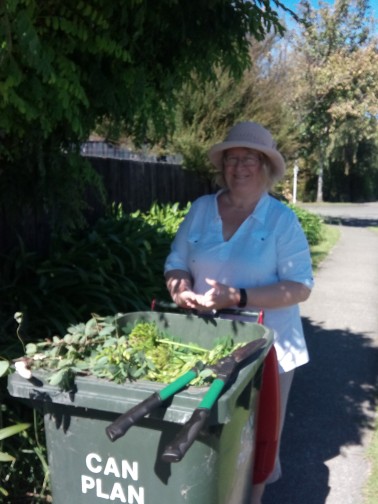So, the Smart Watch has thrown up a number of unexpected benefits, not least of which has been encouraging Amanda to use her right hand.
I swapped it onto her left wrist so she could feel the vibration which reminds her to move every hour. This means she has to use her right hand to put it on and take it off.
Before Christmas her physio encouraged her to hold a clothes peg between her thumb and forefinger to strengthen her finger grip. He said that this, combined with a wrist flick is the motion required to turn the key in a lock. Turns out it’s also the same movement required to undo a watch strap.
Exercises should have some meaningful purpose and until now Amanda has been very reluctant to use her right hand just for the sake of demonstrating she can move it. But now, with her watch on her left wrist, there is a practical reason to use it. So at bedtime she now tries (and mostly succeeds) to take off her watch.
The other obvious benefit of the watch has been the step counter which has her doing laps around the kitchen island if she thinks she hasn’t walked enough during the day.
The only complication is shopping. When she is pushing the cart, presumably because of the position of her arm, the watch thinks she is cycling!
She is still in the early stages of physical recovery and so as she continues to become more active the various features of the watch will become more apparent to her.
*************************************************************************************
I’ve decided she is no longer recovering.
After 12 months and having recently been discharged from the care of the hospital neuro team she is now simply getting fitter, both in body and brain.
So from now on this is a journey back to fitness, mentally and physically.
Amanda only sleeps on her back. Although she can roll, sleeping on a side you cannot properly feel is apparently unnerving and so she doesn’t move all night, even subconsciously in her sleep. This means if she snores, she doesn’t move to relieve it.
I suspected this has been causing sleep apnea. Her doctor took us through a checklist and as a result she will get public funding to investigate it further. While we were there I also mentioned she is still concerned about her swollen legs, caused it appears by her general lack of regular mobility.
I mentioned to the doctor I was aware there is a local specialist who is able to perform lymphatic massage . This is commonly done for women post – mastectomy and consequently the masseur is in high demand. Once again the doctor put Amanda’s name forward to have it publicly funded.
So even a year post – stroke the New Zealand health system is still coming through for us. Perhaps this has something to do with the fact the doctor noted she hadn’t seen Amanda since shortly after she was discharged from hospital last May.
Finally, on one of this week’s evening walks, Amanda stepped off the kerb and veered into the road. I told her to watch out for oncoming cars.
“Don’t worry.” She said.
“I’m indestructible”

“Her physio encouraged her to hold a clothes peg between her thumb and forefinger to strengthen her finger grip. He said that this, combined with a wrist flick is the motion required to turn the key in a lock. ..” That comment resonates. My TIA mercifully put me out of mental action for about 12 months but I thought I was pretty much unaffected physically. However for some months after my episode I could not turn the ignition key to start the equally old corolla. Now I know why.
LikeLike